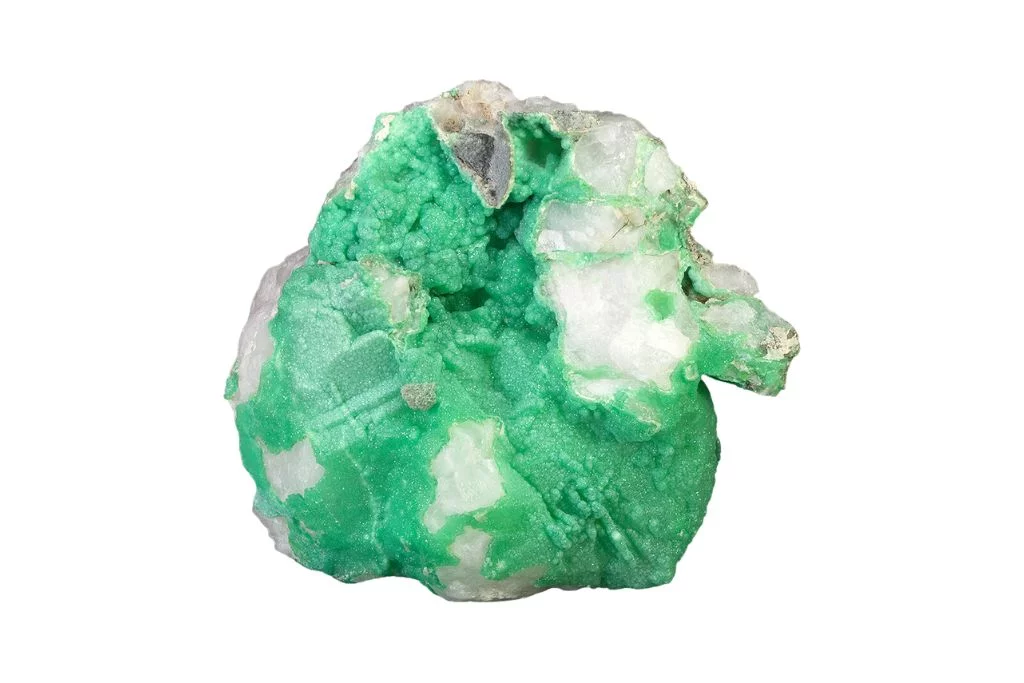Physical Appearance of Amatrix
Amatrix, a captivating crystal formation, boasts a striking appearance that sets it apart from other minerals. This unique gemstone is characterized by its distinctive coloration, typically displaying a rich, deep purple hue reminiscent of amethyst. However, Amatrix crystals often feature contrasting white or gray matrix patterns interspersed throughout, creating a visually stunning contrast.
Crystal Structure and Formation
The crystal structure of Amatrix is primarily composed of quartz, with the purple coloration attributed to iron impurities within the mineral. The matrix patterns are formed by inclusions of other minerals, such as calcite or dolomite, which become embedded in the quartz during the crystallization process. This interplay between the purple quartz and the lighter-colored matrix results in a complex and visually appealing gemstone.
Notable Physical Characteristics
One of the most remarkable features of Amatrix is its diversity in pattern and composition. Each specimen is unique, with varying ratios of purple quartz to white or gray matrix. Some pieces may display intricate, web-like patterns of matrix throughout the crystal, while others might showcase larger sections of solid purple punctuated by streaks or patches of matrix. The crystal’s surface can range from smooth and polished to more textured, depending on the specimen and any treatments applied.
Unique Aspects of Amatrix
What truly makes Amatrix stand out is its ability to combine the spiritual properties associated with amethyst and the grounding qualities of the matrix material. This duality is not only visually striking but also highly prized by crystal enthusiasts and collectors. Additionally, the interplay of light within the crystal can create fascinating effects, with the purple areas often exhibiting a subtle translucency while the matrix portions remain opaque, adding depth and dimension to the overall appearance of the stone.
Historical and Cultural Significance of Amethyst
Amethyst has been revered throughout history for its striking purple hue and perceived mystical properties. Ancient Greeks and Romans associated this quartz variety with Bacchus, the god of wine, and believed wearing amethyst could prevent intoxication. The gemstone’s name derives from the Greek word “amethystos,” meaning “not drunken.” In medieval Europe, amethyst was considered a symbol of royalty and ecclesiastical dignity, often adorning the rings of bishops and the crowns of monarchs.
Metaphysical Associations
In metaphysical circles, amethyst is highly regarded for its spiritual and healing properties. It is believed to enhance intuition, promote calm and balance, and facilitate meditation. Many consider amethyst a powerful stone for protection against negative energies and for purifying one’s aura. The gemstone is often associated with the crown chakra, which is linked to higher consciousness and spiritual awareness.
Common Uses and Applications
Today, amethyst is widely used in jewelry, decorative objects, and healing practices. In crystal therapy, it is frequently employed to alleviate stress, anxiety, and insomnia. Some practitioners use amethyst to support addiction recovery, drawing on its historical association with sobriety. The stone is also popular in meditation practices, with many individuals placing amethyst clusters in their homes or meditation spaces to create a tranquil atmosphere.
Benefits and Modern Applications
Beyond its traditional uses, amethyst has found applications in modern alternative therapies. It is sometimes incorporated into acupuncture and reiki sessions to enhance healing energies. In the realm of emotional well-being, amethyst is believed to promote mental clarity, enhance decision-making abilities, and foster creativity. Some people keep amethyst in their work environments to boost concentration and productivity. While scientific evidence for these benefits is limited, many individuals report positive experiences with amethyst, attributing improvements in their mental and emotional states to the gemstone’s influence.

